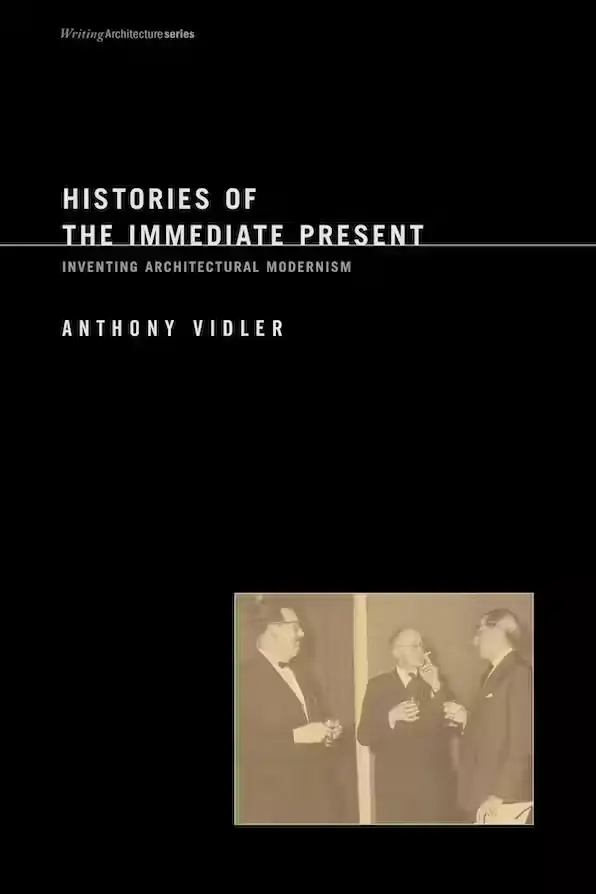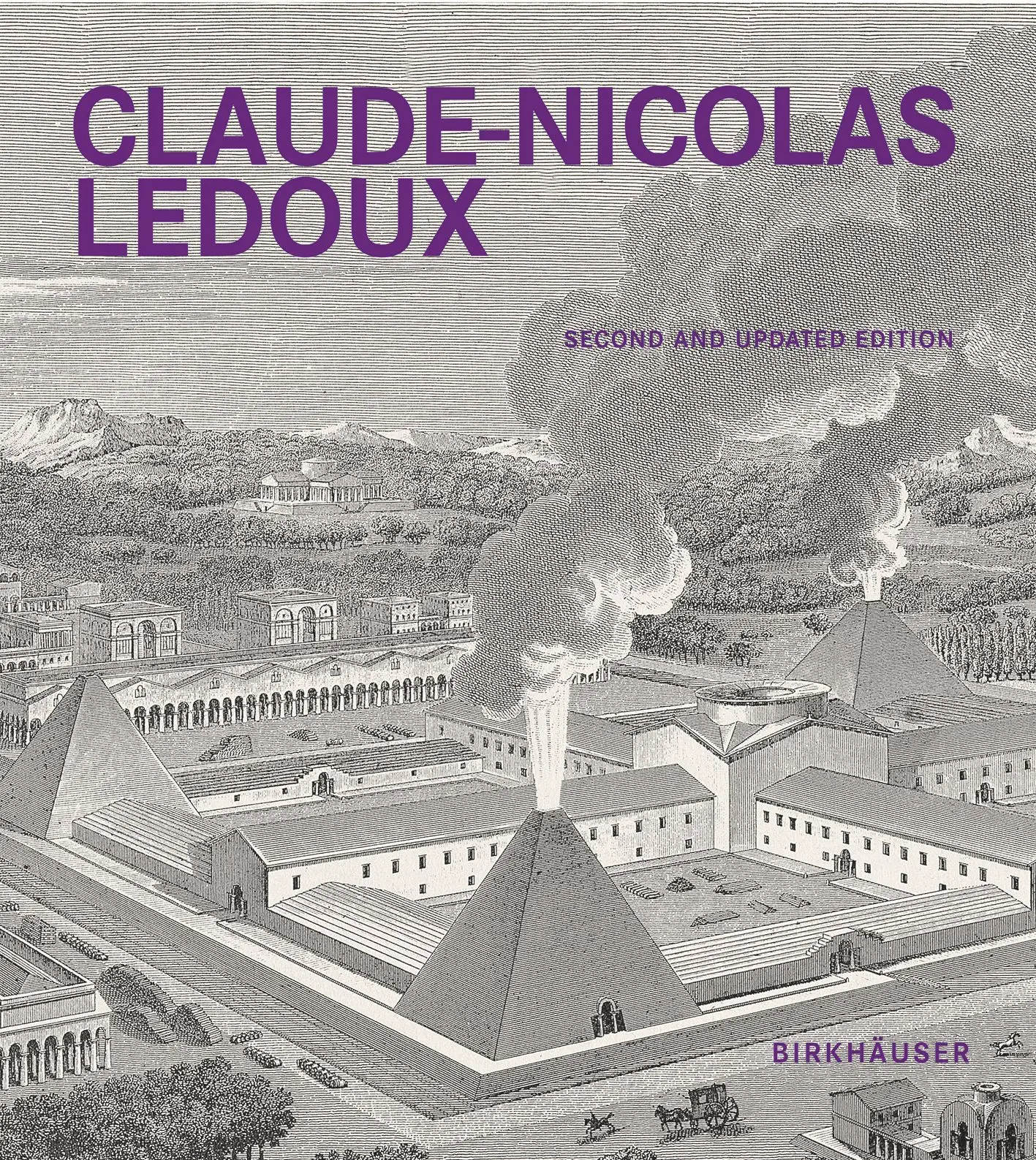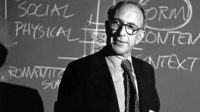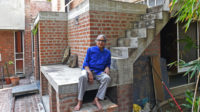Anthony Vidler, a much-heralded architectural historian, theorist, and academic, died at his home in Manhattan on Thursday, October 19. His wife of 39 years, Emily Apter, a professor of French and comparative literature at New York University, said he had been ill with B-Cell Non-Hodgkin lymphoma.
Vidler was raised in Essex, England, near London, and received his B.A. and Dipl. Arch from the Emmanuel College of Cambridge University, and much later, a Ph.D. in architectural history and theory from the Delft University of Technology in the Netherlands.
At Cambridge, Vidler was taught by Colin Rowe who, as he recalled in a recent lecture, “From Soane to Ledoux and Back Again,” had deeply influenced the young student with his “ability to abstract from history the lessons of composition and formal interpretation.” Vidler also met another person at Cambridge who would be instrumental in his career path—Peter Eisenman, then working on his Ph.D. who was Vidler’s instructor in the First Year Design Studio. “We became buddies,” recalls Eisenman. Later, after Eisenman returned to the U.S., he asked Vidler to join him for a year to work on a project called the New Jersey Corridor—a 20-mile linear city—that he was designing with Michael Graves. Fairly soon, Vidler was teaching at Princeton’s School of Architecture where both Eisenman and Graves were ensconced. (Soon more Brits would come to Princeton, such as Kenneth Frampton and Alan Colquhoun, adding to the enriching of the U.S. architectural culture in the late 1960s.)
.webp)
A recent photo of Vidler. Photo courtesy Emily Apter
Vidler is regarded as a widely influential educator in the United States, owing to his many academic affiliations since his arrival on these shores: professor of architecture and department chairs at Princeton University’s School of Architecture (1965–1993); chair of the department of art history at UCLA (1992–2002); dean of Cornell University’s College of Architecture, Art, and Planning (1997–1998); and dean of the Irwin S. Chanin School of Architecture at Cooper Union (2001 as acting dean; then the official dean from 2002 to 2013). Vidler also taught architecture at Brown University (2013–2014) and at Yale University’s School of Architecture (2015–2019). And he kept teaching at Cooper until recently. Nader Tehrani, Cooper’s dean of architecture from 2015 to 2022, says of Vidler’s legacy: “As a dean, Tony presided over an era that can be described as next to impossible, with John Hejduk having cemented the school’s [artistic] ethos for three prior decades. That Tony maintained that ethos, while also finding strategic ways to imagine it in an expanded field, is a testament to his creative, intellectual capacity.”
Mary McLeod, professor of architecture at Columbia University’s Graduate School of Architecture, Planning and Preservation, recalls her days as Vidler’s student at Princeton. He was “a brilliant teacher,” she says. “Not only was his historical and theoretical knowledge broad and all-encompassing, but he had a highly synthetic and original mind, which was able, with incredible speed, to formulate connections and interpretations . . . more than anything, he taught me how to think.”

Histories of the Immediate Present: Inventing Architectural Modernism, MIT Press, 2008.
Vidler’s accomplishments went beyond his professorial responsibilities. He published a number of books, including the incomparable Histories of the Immediate Present: Inventing Architectural Modernism (2008), where he analyzes the approaches of four architecture critics in the mid-20th century—Emil Kaufmann, Reyner Banham, Colin Rowe, and Manfredo Tafuri.
Other notable books are The Writing of the Walls: Architectural Theory in the Late Enlightenment (1987); The Architectural Uncanny: Essays in the Modern Unhomely (1992); Warped Space: Architecture and Anxiety in Modern Culture (2000); James Frazer Stirling: Notes from the Archive (2010); and The Scenes of the Street and other Essays (2011).
Vidler became perhaps best known for his book, Claude-Nicolas Ledoux: Architecture and Social Reform at the End of the Ancien Regime (1990), the recipient of the Alice Davis Hitchcock Award from the Society of Architectural Historians. Subsequently in 2005, he revised an earlier book on Ledoux in French (1987). He then again revised and expanded this 2005 version, titled Claude-Nicolas Ledoux: Architecture and Utopia in the Era of the French Revolution, with a second edition in 2021.

Claude-Nicolas Ledoux: Architecture and Utopia in the Era of the French Revolution, Birkhauser, 2021.
Vidler’s work was hailed for enlarging the perception of this Enlightenment architect by defining Ledoux’s thinking and practice within a social and political context. As part of his scholarly research, Vidler found a series of drawings stashed away near Ledoux’s famous factory, the Royal Salt works at Arc-et- Senans in eastern France. Eventually Vidler organized and designed the installation for an exhibition at a museum at the renovated Royal Salt Works in 1990. As architectural historian Barry Bergdoll says, Vidler “reinvigorated the study of the architecture of the Enlightenment, drawing out from close readings of design the overlapping filters of intellectual, economic, and political history.”
Curatorial predilections spurred Vidler to mount other exhibitions such as out of the box: price rossi stirling + matta-clark (2003–2004) at the Canadian Centre of Architecture in Montreal, and James Stirling, Architect and Teacher (2008) at the Yale University Center for British Art and the Canadian Centre for Architecture. As Yale architecture professor Alan Plattus comments, “Tony Vidler was a protean character, occupying many roles with substance and style.”
While an interest in contemporary architects may often be unusual for an historian of the 18th century, Vidler looked at contemporary design to see how it could absorb lessons from history without falling into the trap of copying or wallowing in nostalgic clichés. Vidler’s participation at the Institute of Architecture and Urban Studies (IAUS) founded in New York by Peter Eisenman in 1967, testified to his being drawn to history and modernity. At the IAUS, Tony was one of the editors of Oppositions, the theoretical journal—along with Eisenman, Kenneth Frampton, and Mario Gandelsonas. Yet Vidler was also the editorial director of Skyline, another IAUS publication, which was newsier and aimed at a wider audience. Here Vidler worked with Skyline’s Editor (me) to create a tabloid-style monthly from 1981–1983. Thanks to Tony, Skyline published articles by Carl Schorske, Peter Brooks, Thomas Bender, and arranged an interview with Michel Foucault.
Eisenman and Vidler remained friends through the years at Cambridge, then Princeton, the IAUS, and Yale. “Tony would read what I wrote and knew the academic sources, so we could have a discussion. Recently he was guiding me through something I’m writing on Alberti. I miss him.”
At the same time, Vidler’s appetite for investigating how other disciplines affect architecture remained constant. As Andreas Huyssen, Professor Emeritus of German and Comparative Literature at Columbia University, sums up, “Tony’s contribution to that whole cross-disciplinary realm will continue to inspire future generations.”
With regard to Vidler, architect Diana Agrest, who worked with Tony both at Cooper Union and the IAUS states: “Tony's voice and generosity of spirit will be missed as he has left a terrible void in our world . . . but a void that will be filled with the power of his extraordinary legacy as an exceptional human being, that has profoundly touched so many lives as an intellectual, a historian, teacher, and mentor.”
Anthony Vidler is survived by his wife Emily, his son Nicolas Apter-Vidler, his brother Richard Vidler, and two daughters from his first marriage, Anna and Sarah Vidler, along with three grandchildren (Sam, Penni, and Tobey) by his late son Ben.






Post a comment to this article
Report Abusive Comment